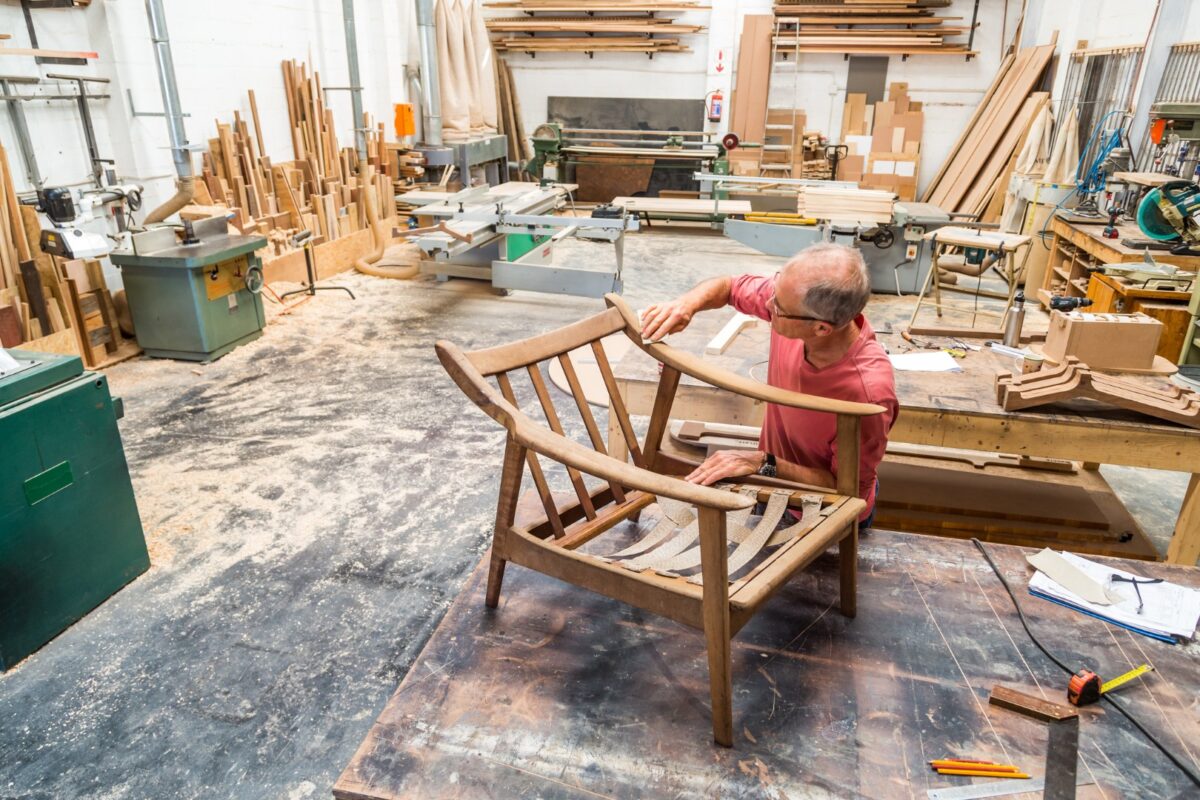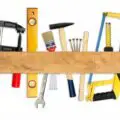Power Tools
How To Get Into Woodworking As A Hobby
Woodworking can be quite an interesting hobby, with a rather broad scope of fields to indulge in. Considering how vast this field is, it's not easy to know where to begin. Fortunately, I'm here to help!
I was lucky to have an informed person introduce me to the enthralling activity. Nonetheless, learning is an everyday journey, so you will still learn something new even once you've improved your skills.
How to get into woodworking? Here is a complete guide:
Learn the Basics
Similar to any other new activity you indulge in, for woodworking, you have to learn the basics, and they include:
The Basic Techniques
Here are some of the fundamental techniques involved in woodworking:
Sawing
The easiest and most convenient projects for you will comprise cutting the wood into particular sizes and shapes. With that in mind, newbies like you need to learn to implement cutting techniques depending on the tools you have.
When it comes to sawing, here are the different saw types you’ll use:
Chainsaw
Oftentimes, these are used to source wood, though you can also use them to make rough cuts and shape various workpieces.
Handsaw
As the name suggests, this tool is nifty and portable. You don’t need electric power or gas to use it; it is a manually operated tool.
Table saw
This is the best option if you want an accurate-cutting and versatile saw. It's among the fastest cutting saws and lets you modify both cutting depth and angles.
Circular saw
A circular saw comes in handy when making straight cuts on different materials. Like the hand saw, these can be portable and highly efficient.
Jigsaw
The narrow blade features in jigsaws make it perfect for curving and shaping your workpiece.
Bandsaw
Lastly, is this not-so-popular saw type ideal for executing precise curved cuts, making intricate cuts, and rounding the edges.
Jointing
The next fundamental technique to learn is jointing. Prevalently, jointing involves joining two or more pieces of wood and using adhesives like glue to link joint angles and flat surfaces. Most importantly, you have to learn this if you want to partake in woodworking.
Routing
You can use a router tool for this. It generates finished edges and is the most suitable option for creating cabinet grooves or furniture.
Planing
Once you cut your workpiece into the right shape, the next step comprises smoothening the edges. It eliminates waste materials that were left behind as you were shaping it. There are different planer gear you can use.
Sanding
This is one of the last steps for your workpiece, where you will use sandpaper for smoothing. For best results, pick a sandpaper with medium grits. Additionally, consider using an electric sander.
Drilling
Drilling includes using drill drivers to make holes by driving screws and bits into your workpiece.
Gluing
Like jointing, gluing links two or more pieces of wood to create a bigger or more realistic workpiece; the workpieces must be glued firmly. Otherwise, the joint will be weak and detach over time.
Lathing
Lathing calls for lathing tools and involves wood-turning, which lets the device produce different forms and shapes of a workpiece. Even though this isn't mandatory when starting woodworking, it will come in handy eventually.
Finishing
After you're done cutting, planning, joining, sanding, and lathing, the final step is finishing. This technique involves using a finishing product, like paint or primer, to protect the wood surface.
Getting the Right Tools & Equipment
Now that I’ve covered the techniques you need to learn, it only makes sense that you get the right equipment! In that case, you have power tools or electrically powered options.
Power tools will be beneficial when you have demanding projects, as they help get the job done quickly.
On the other hand, electrical-powered tools like a drill or miter saw make cutting easier and more precise. While these tools can be somewhat intimidating, make time and learn how to use them since, at some point, you will have to use them.
Saws
Woodworking needs cutting, which is why you need a saw, several depending on the type of projects you intend to handle. In the beginning, woodworking projects need straight cuts, but as you advance to more complex projects, you'll have to make curved and other more intricate cuts.
Blades
Buy a couple of sharp blades for your woodcuts. You should also keep in mind that different saws require varying blades; for instance, a circular blade doesn't use the same blade as a jigsaw.
Planers
You can choose a hand or electric-powered planer. The latter is helpful and a better choice when working with large workpieces. As for hand planers, they are perfect for smaller projects and supremely versatile. Also, they are great for joinery and smoothing.
Drills
The market includes two major options for drills; powered and hand drills. Depending on your project, you can pick either, but I recommend employing the best drills for making more extensive and deeper holes since they need more power and force.
Clamps
Clamps will help you keep the workpiece in place, which hinders imprecise drills and cuts.
Chisels
These tools have a sharp-edged metal blade and work best with a hammer or mallet to shape lumber to eliminate extra wood. Even though some chisels are small and light, mortise picks are better when working with heavy-duty workpieces.
I recommend manual options like knives and chisels for a newbie like yourself. You can begin with easier projects like bowls and spoons. Keep in mind that you don’t have to purchase electrical-powered options.
Create your Workspace
With the information so far, you know what you have to do, from cutting to finishing, and the tools you need to do this; it only makes sense that you set up your workspace. The space you require depends on the projects you intend to partake in.
A separate workspace for your hobby boosts productivity and creates a serious work environment. Whether you'll be doing small projects, arts and crafts with your kids, or bigger professional-level projects, set up a conducive space for woodworking.
Learn More About Woodworking
The best way to learn about woodworking is to take woodworking classes. With everything involved, woodworking needs a lot of practice and skills. If you are confused along the way, consider taking woodworking classes.
While a couple of my professional friends advise that I work independently, classes are an excellent pick for you in need of extra advice and guidance.
Here, you'll get properly instructed lessons to learn to use a hand plane, drill, and orbital sander. Additionally, you can invest in a woodworking book with elaborate plans and guides. Also, if you're interested in a different woodworking field, try the scroll saw and woodturning lessons.
Besides learning to use the different tools, these classes also provide excellent guides about selecting the right wood type and other vital items you'll require for your work. Besides, it's a wonderful way for newbies to keep up with the latest trends.
Why You Should Trust Us
At Woodworking Tool Guide, we know one size doesn't fit all! We cater to every woodworker, from beginner to pro, with insights and recommendations tailored to your skill level, project needs, and budget. We take the guesswork out of choosing the right tools, whether you're tackling your first crafting a masterpiece for the ages. So grab your chisel, join our community, and let's build something amazing together!
Woodworking Tool Guide wasn't just born, it sprouted from a seed of passion for the craft. What started as a joyful exploration blossomed into a trusted online haven for fellow enthusiasts like you. We pour our love into meticulously chosen review selections, meticulous hands-on testing, and lab-backed insights, all to empower you with reliable, comprehensive information you can build on. So, grab your tools, trust our guidance, and let's build something beautiful together!
Passion-Driven Expertise
Our journey started with a shared love for woodworking. The team behind the Woodworking Tool Guide is comprised of individuals who are not just writers but passionate woodworkers themselves. This shared enthusiasm ensures that our content is crafted with a deep understanding of the craft and an authentic appreciation for quality tools.
Top Tool Guides Online
Woodworking Tool Guide has rapidly ascended to become one of the premier online destinations for tool guidance. Our commitment to excellence and the accuracy of our information has positioned us as a reliable source for both beginners and seasoned woodworkers seeking trustworthy advice on the best tools for their projects.
User-Centric Approach
Our content caters to every woodworker, from rookies just starting out to seasoned pros tackling intricate projects. We tailor our insights and recommendations to your skill level, project needs, and budget, ensuring you find the perfect tools to match your unique woodworking journey. So step into your workshop, grab your tool belt, and let Woodworking Tool Guide be your trusted companion as you craft your masterpieces.
Continuous Support and Innovation
Woodworking is an ever-evolving craft, and so is our commitment to supporting you. We are dedicated to bringing you the latest information on woodworking tools, techniques, and trends. Our team is actively working to expand our content and bring you more valuable insights, ensuring that you stay well-informed in your woodworking adventure.
Hands-On Experience
Ditch the endless research rabbit hole! At Woodworking Tool Guide, we believe in actionable advice, not armchair analysis. We get our hands dirty, putting every tool through its paces in real-world woodworking scenarios. Whether it's the precision of a table saw, the versatility of a router, or the tactile satisfaction of a handplane, we test for performance, durability, and user-friendliness. No more sifting through dry specs – we deliver practical insights you can trust to transform your woodworking dreams into reality.
Woodworking Tool Guide isn't just a review site, it's your trusted companion on the sawdust-filled path to woodworking mastery. Our expert team, led by veteran David Jones, meticulously tests and explains tools in terms you understand. We cut through the jargon, bias, and confusion with real-world insights and honest evaluations. Join our passionate community, where decades of experience, cutting-edge knowledge, and shared love for the craft come together to guide you every step of the way. So grab your chisel, buckle up, and let's embark on this exciting woodworking adventure, together!
Look for Easy Projects to Try Out!
This is the last piece of the puzzle. As pointed out, woodworking is a vast field, so there are endless projects you can do. From simple bowl and spoon-making projects to complex furniture and cabinet-making projects, there's something for everyone!
All the best in your new endeavor!





